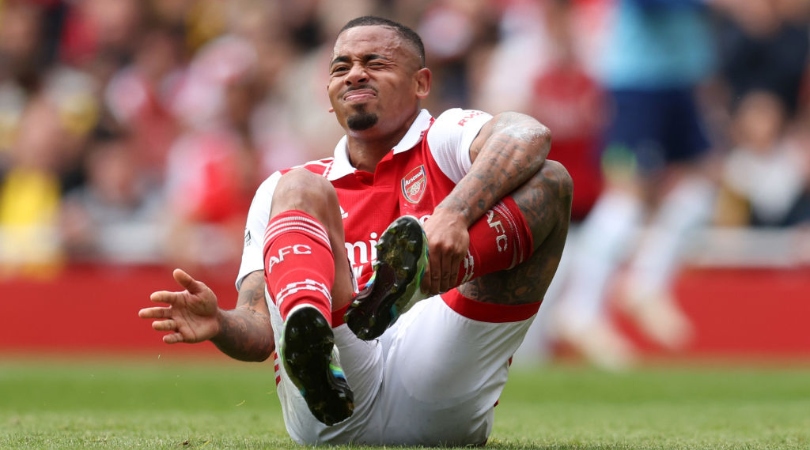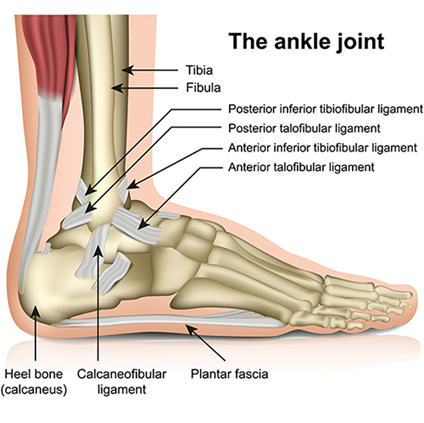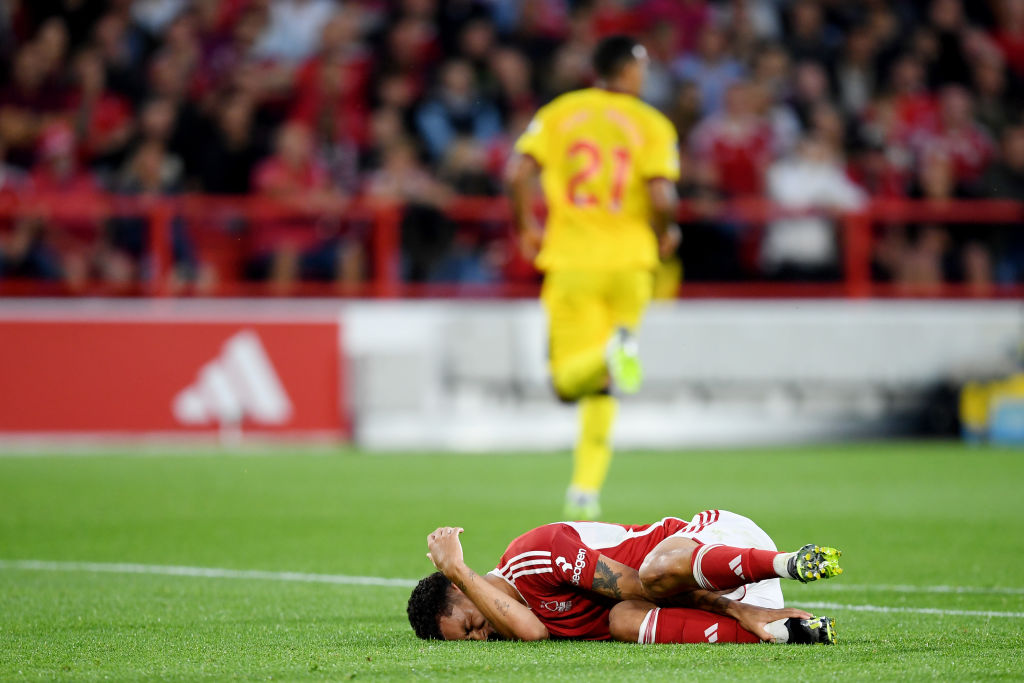
An ankle sprain in football is extremely common, with the large majority of players unfortunately suffering from them to some degree or another at one point in their career - though oftentimes on more than one occasion.
The ankle is made of three ligaments on the lateral (outside) and they stabilise the ankle joint. They are known as the Anterior talofibular ligament, Posterior talofibular ligament and the Calcaneofibular ligament.
Typically, an ankle sprain is a non-contact injury – similar to hamstring injuries or anterior cruciate ligament – as opposed to one that happens when two players come together in a collision. However, a collision between two players can be the catalyst for an ankle sprain occurring.
What is an ankle sprain?
How does an ankle sprain occur in football?

How does an ankle sprain in football occur?
An ankle sprain is an injury that usually occurs at the outside of the ankle when it is rolled, turned, or twisted due to an awkward landing. This leads to stretching or tearing of one of the ligaments.
Players may report symptoms including pain, swelling, bruising and inability to weight bear.
Treatment
How is an ankle sprain treated?

Treatment can be non-surgical or surgical depending on the severity of the ligament damage.
Non-surgical treatment includes RICE (rest, ice, compression, and elevation), anti-inflammatory medication, and early consultations with physiotherapy to work on the joint.
What is the recovery time for an ankle sprain?
The recovery time from an ankle sprain is dependent on the severity of ligament damage.
- First Degree – Few fibres are damaged. It takes approximately two to 10 days for the player to return.
- Second Degree – Extensive damage to ligaments. Person is unable to heel raise, hop or run. It takes approximately 10 to 30 days for the player to return.
- Third Degree – Complete tear of the ligament(s). Person is unable to weight bear. It may take 30 to 90 days for them to return.
Prevention
How is an ankle sprain prevented?
To prevent an ankle sprain from occurring it is important to stretch the muscles around the ankle, e.g., ankle circle rotations, calf stretches, heel raises, heel dips and raises. Ankle strengthening exercises are also useful such as inversion and eversion movements with resistance bands.
Some players also find that wearing an ankle support makes the joint feel more supported and stabilised. It is crucial that you ensure that poorly fitted footwear is not contributing to any potential or re-occurring ankle injuries.
Frequently asked questions
Can you play football with a twisted ankle?
It’s not advised. Playing on a sprained ankle increases the risk of worsening the injury, leading to chronic instability or long-term ligament damage. Rest and rehabilitation are crucial before returning to play.
Are ankle injuries common in football?
Yes, ankle injuries are among the most frequent in football, especially ankle sprains. They account for a significant percentage of time lost to injury in professional and amateur players alike.
Why do ankle sprains take so long to heal?
Ligaments have a limited blood supply, which slows healing. Additionally, the ankle bears a lot of weight and is essential for movement, so returning too soon can cause re-injury or chronic instability.
What are the chances of re-injuring a sprained ankle?
Re-injury rates are high if the ankle is not properly rehabilitated. Players who return too soon or fail to rebuild strength and stability are more likely to experience chronic ankle instability or repeated sprains.







